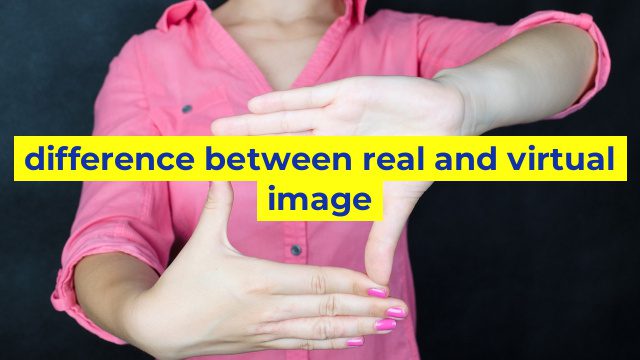Difference Between Real and Virtual Image
When it comes to optics, there are two types of images – real and virtual. Both of them have different characteristics and are created through a different process. In this article, we will discuss the differences between real and virtual images.
Definition
A real image is an image that forms when the rays of light from an object converge and meet at a focal point. It is possible to capture a real image on a screen, as the image is formed by real rays of light that project from the object. However, a virtual image is an image that does not form when the rays of light converge at a focal point. It is a form of an image that appears to emerge from an object that does not actually exist.
Formation
Real images are formed when the light from an object converges on a single point, resulting in an image that can be captured on a screen. They can be formed using concave mirrors, convex lenses, or convex mirrors. The position and size of the real image depend on the position of the object, the curvature of the mirror, and the distance between the object and the mirror.
Virtual images are formed when the light from an object appears to diverge from a single point, making it impossible to capture the image on a screen. They are formed by convex lenses or concave mirrors, where the object is located at a distance greater than the focal length of the lens or mirror. Virtual images are always upright and smaller than the object.
Characteristics
Real images are always inverted, meaning that the image is upside down, and the position and size of the image depend on the position of the object relative to the focal point. They can be projected onto a screen and appear to be real objects.
Virtual images, on the other hand, are always upright, meaning that the image is not inverted. The position and size of the image depend on the position of the object and the distance between the object and the lens or mirror used to create the image. Virtual images can never be projected onto a screen, as they do not actually exist.
Conclusion
In conclusion, the difference between a real and a virtual image lies in the way they are formed, their characteristics, and the fact that only real images can be projected onto a screen. Real images are formed when rays of light converge at a focal point, and virtual images when they appear to diverge from a single point. Understanding these differences is crucial in the field of optics, and in many other applications where the properties of images need to be understood.
Table difference between real and virtual image
| Real Image | Virtual Image |
|---|---|
| A real image is formed when the rays of light converge at a single point after passing through a convex lens or concave mirror. | A virtual image is formed when the rays of light do not converge but appear to diverge from a point behind the mirror or lens. |
| A real image can be projected onto a screen and can be seen with the naked eye. | A virtual image cannot be projected onto a screen but can be seen by looking through the lens or mirror. |
| A real image is always inverted. | A virtual image can be either upright or inverted. |
| A real image is always smaller than the object. | A virtual image can be either larger or smaller than the object depending on the distance between the lens or mirror and the object. |
| Real images are used in cameras, telescopes, and microscopes. | Virtual images are used in rearview mirrors and magnifying lenses. |


